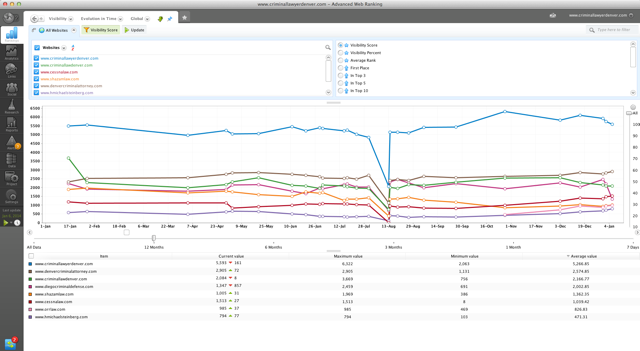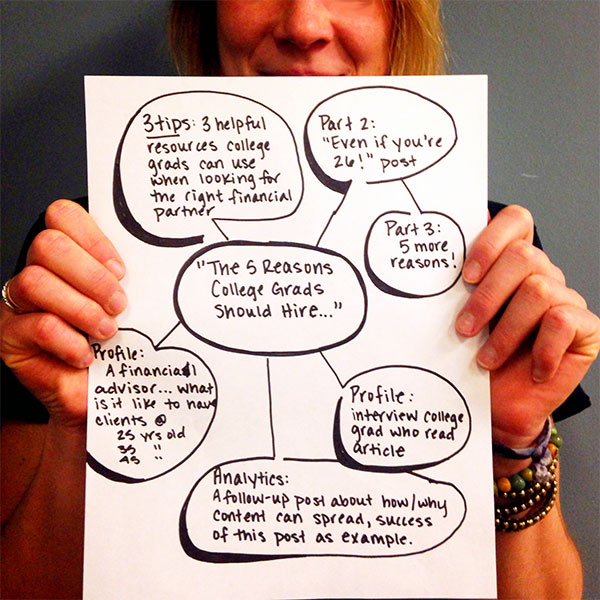
Image Credit: Rajeev K
If Google is good at anything, it’s keeping marketers on their toes.
Every time those crazy Googlers update their algorithm, it sends marketers and SEO specialists scrambling for the best new insights in how to achieve that glorified #1 Google search result spot.
As we know, the September 2013 Hummingbird update was a big one—not only updating the existing algorithm, but completely overhauling the system.
But the interesting thing about Hummingbird was that it didn’t affect search rankings as much as it underscored the concept of “Content is King,” says Scott Hinerfeld, SEO expert with YouDo!Online. It shifted SEO strategy away from “spammy” link-building tactics and into authentic content-building.
“The concept of ‘Content Is King’ and making your site real, unique, and valuable by publishing unique, relevant, and authoritative content…is becoming SEO’s new mantra,” Scott said in an email to me.

An example of one client’s search ranking plunge with Google’s 2011 Panda update. Hummingbird seemed to have less of an effect on search ranking than Panda and Penguin updates. Photo credit: Scott Hinerfeld of YouDoIOnline.
Hummingbird Is Hungry for Context
Really, the reason Hummingbird and Google like content more than ever, is because good content builds context.
The search engine juggernaut is actually trying to decipher the context and meaning behind words on the web. In order to rank highly for specific keywords, Google wants proof that your content is relevant to those topic. For example, to rank for working out, shoes, sports, and athletic wear, Adidas would benefit from content that discusses those topics in greater detail vs. stuffing keywords on their site.
To build great context in the eyes of Google, your content needs to be:
- Authentically produced
- Contextually accurate
- Natural, conversationally toned
- Organic and linked to other relevant sites
- Unique
But every marketer knows that. You want to do more. You want to stay ahead of the competition.
Here are two tips to make your content MORE Hummingbird-friendly.
1. Take One Idea, Brainstorm All the Angles
The simplest way to increase your Hummingbird-friendliness, is to produce a lot of content around strategic topics or keywords. As a general rule of thumb, the more original copy surrounding a singular topic, the better your search ranking potential.
To do this, do a simple brainstorming exercise.
Go back into your archives and grab your favorite blog post. Say it’s an article on “5 Reasons College Grads Should Hire a Financial Planner Before 25.” Hypothetically, the post garnered a huge surge in web traffic, resulting in a major leap of twenty-somethings signing up for your services. In short, the post freakin’ rocked.

Use that post as fodder for blogging inspiration.* Build stronger context around the idea of “financial resources for college grads” by producing more content related to that topic. To do this, we recommend the old fashioned approach. Grab a pen. Think about every possible angle or perspective on that topic. Write them down. Then, challenge yourself to think about them in another way. Put your ideas in a bubble chart.
Your original idea might garner a half dozen new ideas (mine did, and I’m not even in financial services). The bubble chart is a tactic gleaned from Journalism 101—even though it’s moderately silly, it really does produce results. It quickly and effectively strengthens your text by increasing the quantity of relevant words that are directly associated with one topic.
2. Create Blogging Categories and Update Your Site Map
Another way to develop better Hummingbird-friendliness is through blog categories and site mapping.
Every time you develop a new “theme” or category, create an actual blog category in your blogging host provider. For example, you could create the category “financial tools for college,” referencing the above case. As you attribute more individual blog posts to that category, it proves to Google that you are an expert in that field.
Additionally, depending on your settings, categorizing your blog should automatically update your site hierarchy (either by adding a subfolder or a page name). Bonus points for search rank.
Next, update your site map to match your blog categories. Your site map is the organizational hub of your website. Google reads this to understand what your site is about. Kapost’s Chris Boulas, Senior Online Marketing Manager, says if you update your site map to include your category URLs, Google can crawl them more easily and see all of the content that resides within each category. This increases Google’s ability to understand how your content is contextually relevant.
*Need More Resources for How to Generate Ideas for Blogs?
Here are some Kapost articles to help:

